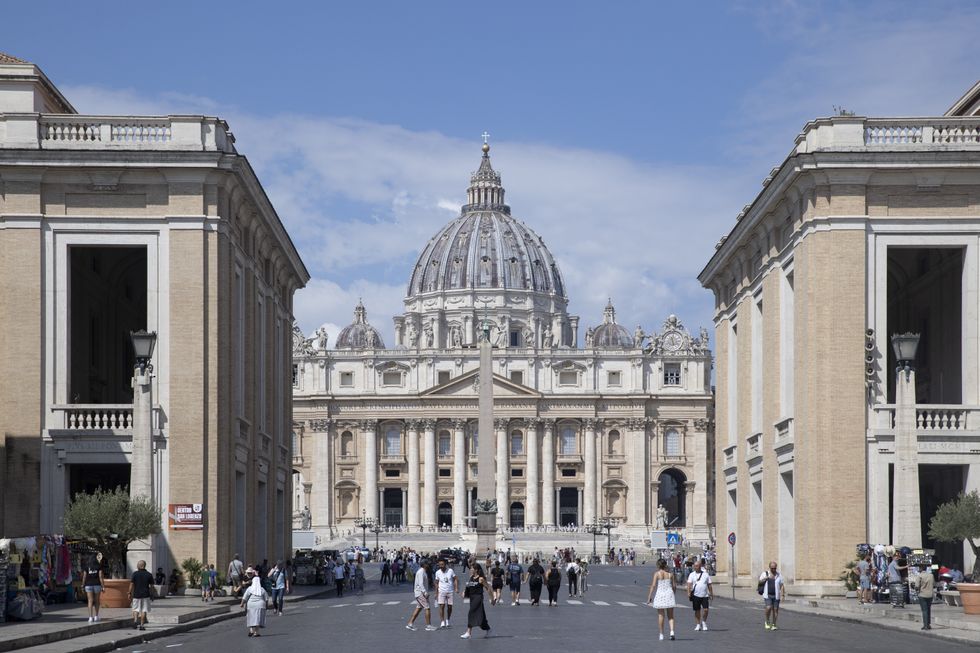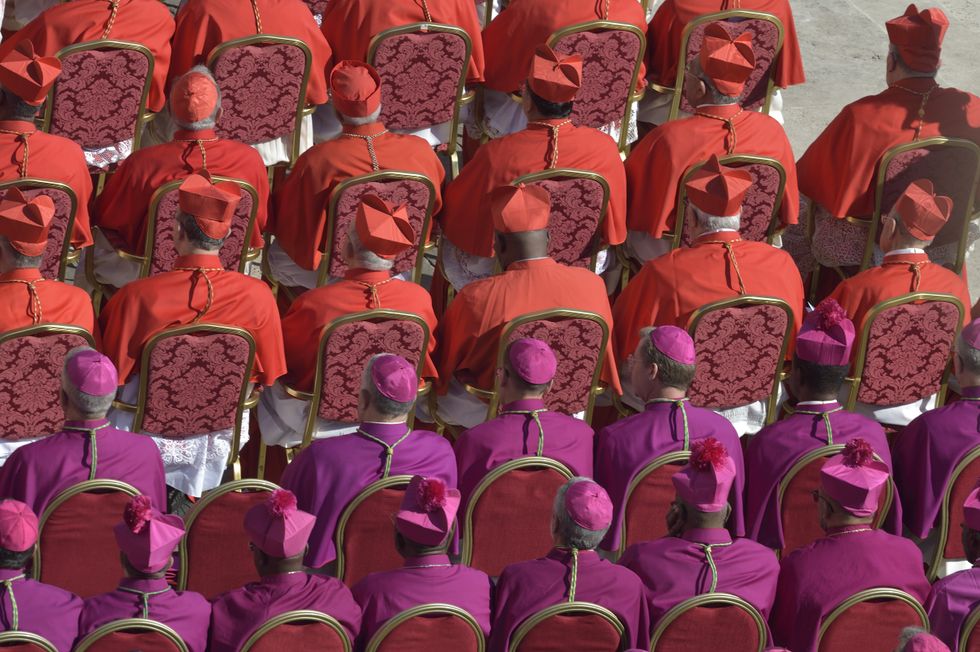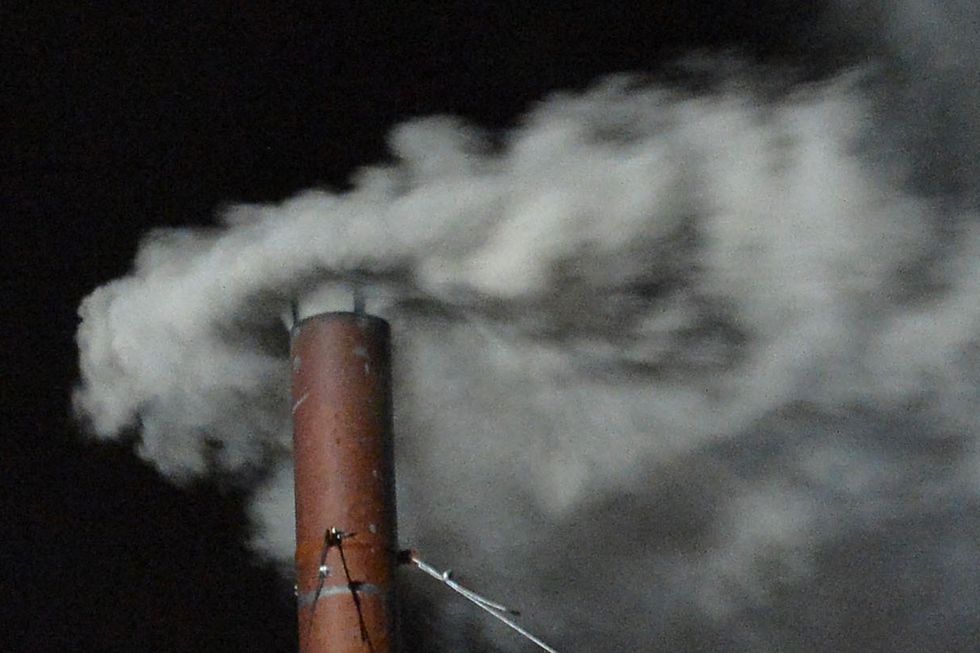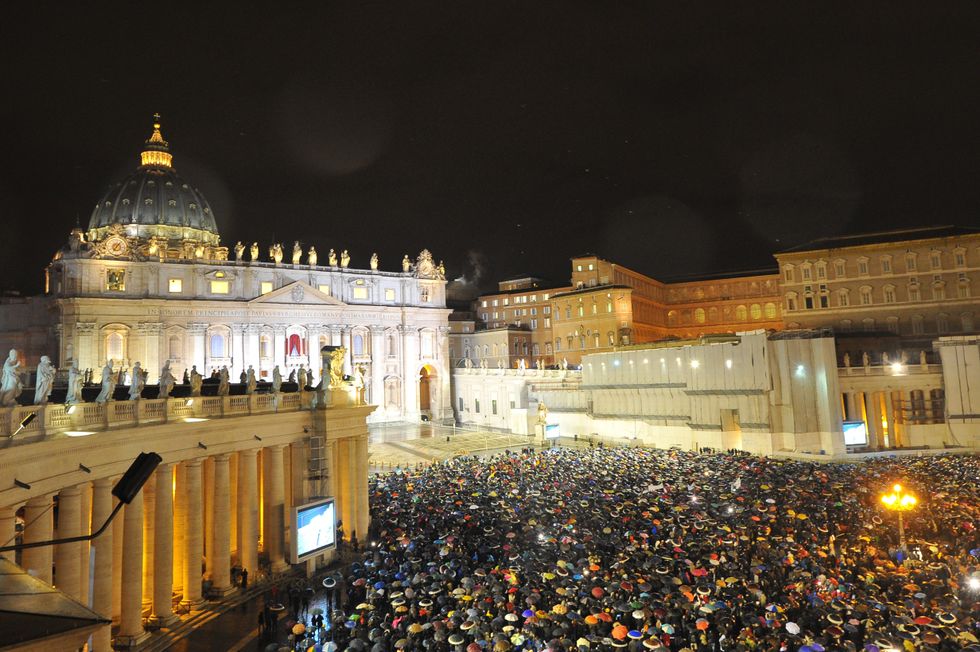Obituary for Pope Francis
GB News
There are no rules around selecting the new papal name of the next pontiff
Don't Miss
Most Read
Trending on GB News
The centuries-old process of the papal conclave - the election of a new Pope - is underway at the Vatican following the death of Pope Francis.
Inside the Sistine Chapel, behind marble walls and beneath Michelangelo's frescoes, 120 cardinals in red robes will select the next pope through a historic vote.
With no phones or connection to the outside world, the cardinals are guided only by centuries of tradition and faith.
For centuries, leaders of the Roman Catholic Church have been chosen at the Vatican in private gatherings known as conclaves.

St Peter's Basilica
GETTY
The historic vote, which often happens between 15 to 20 days after the Pope's death, is shrouded in secrecy.
The process takes place in the Sistine Chapel, where the cardinals are completely isolated from outside influences.
Any baptised Catholic can be elected pope, but since 1379, every pope has been selected from the College of Cardinals - the group who cast the votes at the conclave.
Cardinals are senior members of the clergy, many of whom are bishops and archbishops appointed by the pope.

The cardinals will be completely isolated from outside influences
GETTY
The rules of the conclave, as of January 22, 2025, stated there are 138 electors - and therefore 138 eligible papal candidates - of the 252 cardinals.
Only those under the age of 80 may take part in the secret ballot.
Once the cardinals have arrived, the conclave begins with a special morning Mass in St Peter's Basilica.
In the afternoon, the cardinals walk to the Sistine Chapel to start the voting process.
The College of Cardinals then take a vow of secrecy inside the chapel and, with the exception of a few workers, no one else is allowed in.

White smoke rising from the roof of the Sistine Chapel symbolises a new Pope has been selected
GETTY
All communications with the outside world, including phones and the internet, are removed.
The chapel is thoroughly checked for recording devices to ensure complete privacy.
The cardinals are handed voting papers to write the name of the person they have selected.
One by one, in order of seniority, they take it in turns to approach the altar.
They leave their ballot on a plate, pray below the words "Eligo in Summun Pontificem" - Latin for "I elect as supreme pontiff".
The ballot is then placed in an urn.
The names are counted, and if a name has received two-thirds of the votes, the pope has been elected.
If the first ballot does not produce a result, a maximum of four ballots are held on each successive day: two in the morning and two in the afternoon.
The process is repeated for three days, after which there is a day's rest for prayer and informal discussions.
The voting then begins again for a series of seven more ballots and then another break.
This pattern is repeated twice more and if there is still a stalemate, a result can come from an absolute majority.

Thousands of Catholics gather in St Peter's Square as they await news of the new pope
GETTY
Alternatively, a vote on the two names that received the largest number of votes in the last ballot may be held.
Once a candidate has been chosen, they are called to the front of the chapel and asked whether they are willing to accept.
If the answer is yes, the new pope is then asked to choose his new papal name.
There are no rules around selecting the papal name.
However, the name chosen often reflects a predecessor they admire or is linked to a revered saint.
The papal name can signify the values the new pontiff will focus on during his papacy.
After each round of voting, the ballots are burned with chemicals to produce distinctive smoke signals visible to the waiting crowds.
Black smoke means no decision has been reached.
White smoke signals a pope has been selected.
Shortly after the white smoke appears, the new pope - dressed in his new white robe and red slippers - will make his first appearance.
He will emerge from the main balcony of St Peter's Basilica for the first time as pontiff.








